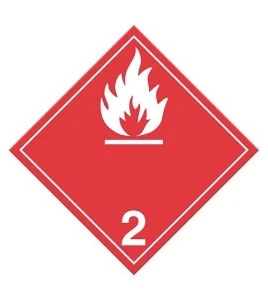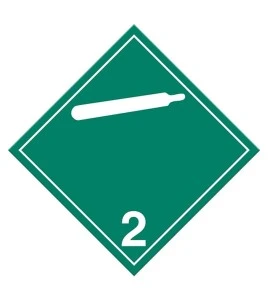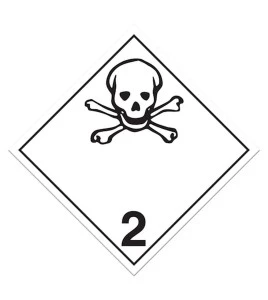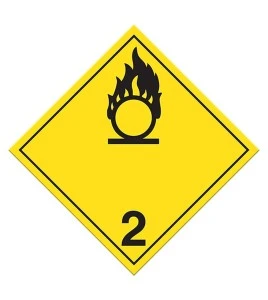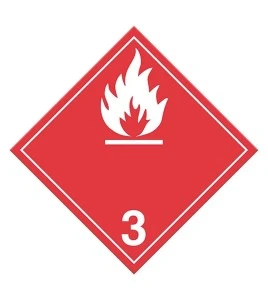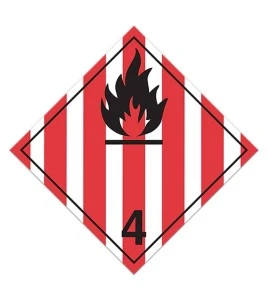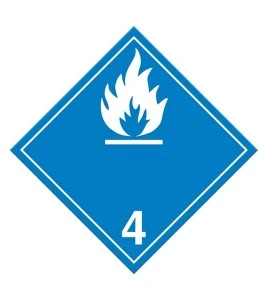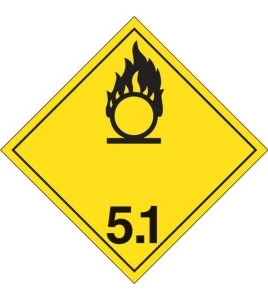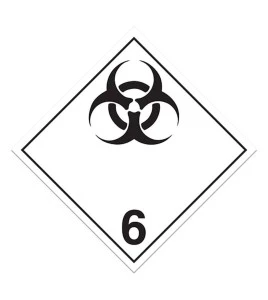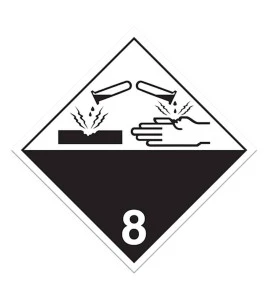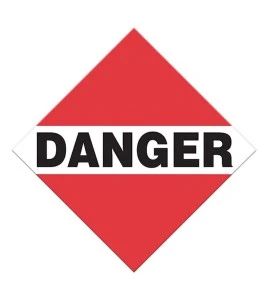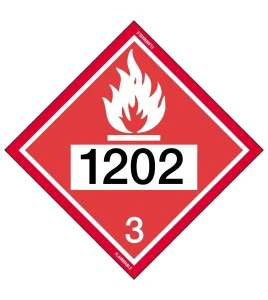Placards for transportation of dangerous goods
In this section, you will find placards for the transportation of dangerous goods (TDG), a type of TDG safety marks. Sylprotec offers placards for most classes of dangerous goods, except class 1 placards for explosives.
Placards are special diamond-shaped signs of fixed size (273 mm, 10 ¾ inches) that warn of the hazards related to the transportation of a product, material or merchandise. Placards include at least three elements: the danger class number, the danger symbol, and the coloured background. Placards codify vital information to ensure the safety of first responders, law enforcement officers, manufacturers, carriers, suppliers and the general public.
Placards must be displayed on all large means of containment with a capacity exceeding 450 litres that are being used for the transportation of dangerous goods, and on vehicles transporting dangerous goods in large means of containment (if a dangerous material is shipped in bulk, the vehicle itself acts as a means of containment). Placards must be placed on each side and on each end of the large container or of the vehicle.
Sylprotec offers placards for the transportation of dangerous goods of the following hazard classes:
-
Class 2: Gases.
-
Class 4: Flammable solids, substances liable to spontaneous combustion, and water-reactive substances.
-
Class 5: Oxidizing substances and organic peroxides.
-
Class 6: Toxic and infectious substances.
-
Class 7: Radioactive materials. Radioactive trefoil symbol on half yellow half white background.
-
Class 8: Corrosives. Corrosion symbol on half white half black background.
-
Class 9: Miscellaneous products and substances. No symbol, white background with black and white vertical stripes on upper half.
-
DANGER placard. No symbol, DANGER label over horizontal white band on red background.
-
Aluminium holder for tagboard, plastic and aluminium placards.
If you are looking for placards with a specific UN code, please contact our customer service. These placards are only available as a special order given the thousands of possible options.
Placards are available in the following materials:
-
Tagboard (laminated paperboard). Short-term use, low weather resistance. Requires a holder or another fixation method.
Best option for single use and for labelling vehicles that will not return to the consignor, such as transportor. -
Adhesive vinyl. Permanent adhesive, non reusable. Does not require a holder. Laminated for better weather resistance. May be difficult to remove manually and may leave residue.
-
Rigid plastic. Requires a holder or another fixation method. Most economical reusable option.
Best option for shipments of dangerous goods that change frequently. -
Aluminium. Most expensive option. Reusable or permanent. High weather resistance. Requires a holder or may be installed directly onto a vehicle.
Best long-term option for companies that frequently ship with their own transport the same dangerous goods.
The consignor (shipper) must determine if placards are required for a given shipment and, if so, must supply the appropriate placards and completed shipping documents. Transports Canada has an online interactive questionnaire (https://www.tc.gc.ca/eng/tdg/dangerous-goods-placards.html) to help you determine if you need to display placards.
The carrier (transporter) must ensure that the placards remain properly displayed during the entire travel duration and that the placards are updated with any change of shipment.
Transportation of dangerous goods is strictly regulated. For an overview of the TDG requirements, consult the TDG Answers Fact Sheet published by the Canadian Centre for Occupational Health and Safety (CCOHS).
-
Federally, TDG is regulated by Transports Canada under the direction of the Minister of Transport.
-
In the province of Québec, TDG is regulated by the Ministère des Transports, de la Mobilité durable et de l'Électrification des transports.
-
Transportation of Dangerous Substances Regulation, which adopts by reference the provisions of the federal TDGR.
-
(Other acts and regulations apply for the international transportation of dangerous goods.)
Please note: TDG placards are distinct from WHMIS hazard pictograms displayed in safety data sheets. Safety data sheets provide information for the safe use of products, while TDG placards provide information for the safe transportation of these products.

